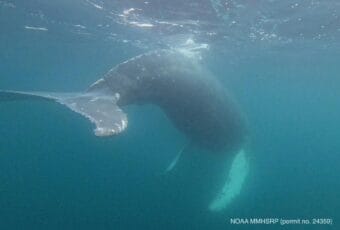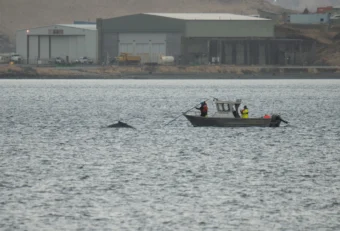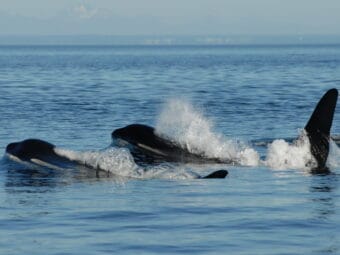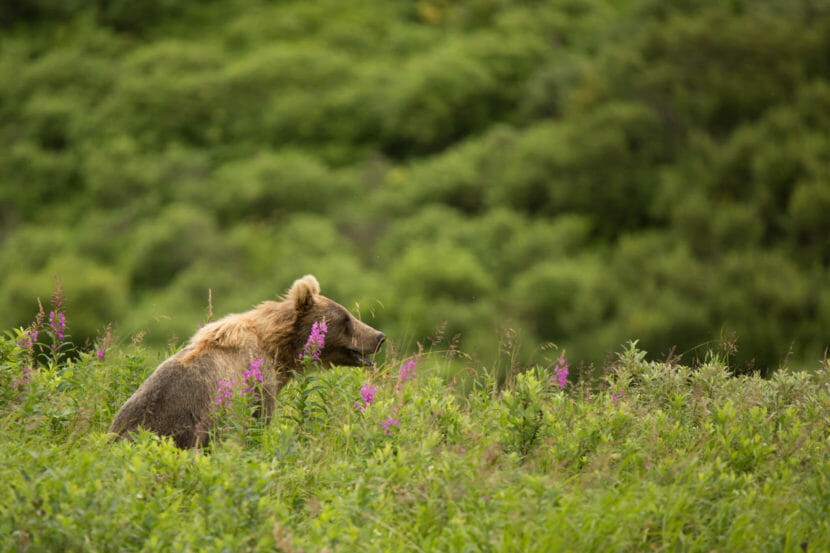
A dead brown bear cub found on Kodiak Island is one of the latest signs that the current strain of highly pathogenic avian influenza behind the deaths of tens of millions of birds is continuing to circulate in wild populations, infecting a variety of species.
The cub carcass, discovered on Nov. 26 by a local deer hunter, was the world’s first documented death of a brown bear from the current strain of avian influenza, said Nate Svoboda, the Kodiak area wildlife biologist for the Alaska Department of Fish and Game.
The cub’s virus infection, confirmed by a laboratory in the Lower 48, was announced on Wednesday by the department.
It was the second such bear death in the United States; the first U.S. bear known to have died from the infection was a black bear cub in Glacier Bay National Park, a case that followed an earlier black bear case in Canada, said Dr. Bob Gerlach, Alaska’s state veterinarian.
Expect to keep finding birds and possibly other mammals infected with this strain of influenza, warned Gerlach, who gave a presentation on Wednesday to the Alaska Native Tribal Health Consortium’s Local Environmental Observer Network.
Unlike past waves, which passed quickly through bird populations before petering out in a matter of months, this strain appears to be extremely persistent, Gerlach said.
“The concern is it’s maintaining itself in the wild bird populations,” he said in the webinar. That means state and federal agencies and their partners will have to keep monitoring outbreaks and bracing for more waves of infected wild and domestic birds after migratory species arrive next spring, he said.
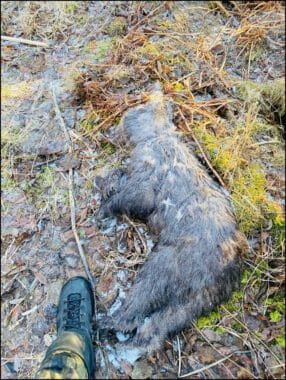
“What we’re anticipating is this may be here for a while,” he said.
Around the world, the virus has damaged several populations of birds, including some rare species. Among the bird populations hard hit by this avian influenza are cranes in Israel, where thousands were found dead about a year ago, and more recently, pelicans and other seabirds in Peru.
Several mammals of different species have also succumbed to the virus. In the United States, the list includes red foxes — with some cases found in Alaska — and in the Lower 48, land animals like skunks and raccoons. Some marine mammals have also died from the disease, notably harbor seals in Maine.
The brown bear cub discovered on Kodiak Island was likely dead for only two or three days, and there were no signs of damage to the body, Svoboda said. However, he said, it was emaciated, which is unusual for a bear in the fall, the time of year when bears are normally their maximum weight, having packed on fat in preparation for denning.
The infected black bears found in Glacier Bay National Park and in Forillon National Park in Canada’s Quebec province were both euthanized. They were found to be extremely ill, having trouble walking, and racked by seizures, state officials said. The Alaska black bear cub was blind and had been abandoned by its mother, they said. Necropsies revealed that both bear cubs had encephalitis, an inflammation of the brain, Alaska and Canadian officials said in statements.
The black and brown bear cubs likely picked up the virus after eating infected birds, Gerlach said. There is no evidence that bears can infect other bears with the virus, he said.
And there is no evidence that humans are at much risk from this virus, Gerlach said. “This particular strain does not have a high propensity to get into and infect people,” he said in the LEO webinar.
That is good news for Alaska bird hunters, he said, though the usual advice about sanitation practices of handwashing, glove-wearing and avoidance of sick birds and animals continues to apply.
Since the disease emerged in Alaska birds last spring, about 800 samples from dead animals suspected to have infections have been processed, and there were nearly 100 cases confirmed by Lower 48 labs to have been positive, Gerlach said. The vast majority were from birds, though there were some mammal cases.

That is only a small fraction of the cases in the wild populations, Gerlach said. Officials in Alaska are limiting their shipments of samples because the Lower 48 labs doing the testing are backlogged and are placing higher priority on commercial poultry.
That has left a lot of birds untested, in Alaska and elsewhere. In the Bering Strait and Yukon-Kuskokwim regions, for example, residents have reported numerous suspected but unconfirmed cases of avian influenza among wild birds. Those included swans and various types of geese that were exhibiting strange and distressed behavior consistent with influenza infection.
Meanwhile, there are numerous wild birds that are healthy but infected with the virus – and able to spread it around, Gerlach said. He cited some recent tests by the U.S. Department of Agriculture, which found a significant number of Southcentral Alaska birds were carrying the virus but unaffected by it.
“They’re still flying around and depositing their droppings everywhere,” he said.
Whatever virus is spread by those birds could linger a long time in the environment, Gerlach said, pointing to research led by U.S. Geological Survey wildlife geneticist Andy Ramey that found that avian influenza viruses can remain infectious for more than a year in Alaska’s wetlands environments.
“Unfortunately, we do know that the extreme cold up here preserves the virus very well,” he said. “So we do know it’s going to be a problem for us.”
This story originally appeared in the Alaska Beacon and is republished here with permission.

